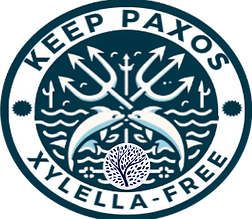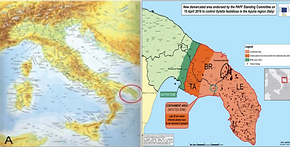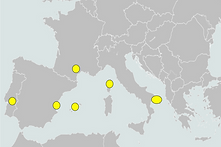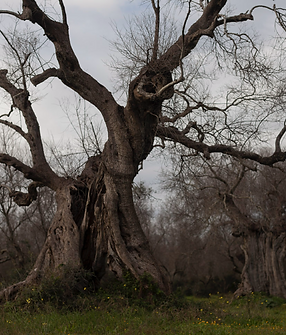

Welcome to the "Keep Paxos Xylella-Free" Awareness Campaign landing page!
Its mission is to protect the island's natural heritage from Xylella Fastidiosa (Xylella for short) by raising public awareness and by promoting actions on the grounds of Protection, Prevention and Early Detection.
TOGETHER, we can protect the natural beauty of Paxos, preserve its economy and safeguard the community well-being from the threat of Xylella.
Xylella in a Nutshell


In late 2013, Italian researchers noticed something alarming in the Apulia region of Southern Italy: olive trees were rapidly dying, and no one knew why. This mysterious condition, which caused the trees to wither and die quickly, was named Olive Quick Decline Syndrome, or OQDS for short.

By the end 2015 it was clear that Xylella Fastidiosa, a harmful bacterium, was responsible for causing OQDS in olive trees. Once infected, the tree can die within months, causing irreversible damages to biodiversity, to olive oil production and to the social and economic condition of local communities.

Since then, Xylella has become a major threat to important crops in Europe with presence in Southern Italy, France (Corsica) and Spain (Balearic islands and Alicante).
In all infected areas phytosanitary measures aiming at the eradication or containment of the disease have being taken.
To this date Greece has not reported any Xylella infection.

-
Scientists are trying different approaches, like suppressing infected plants, using advanced biological tools, or targeting the bacterium and its insect carriers.
-
Despite massive investments from both the public and private sector, no solution has been found yet in order to protect and safeguard the existing iconic olive tree across the Mediterranean basin.
-
To this date, treatments able to completely recover infected plants are not available (EFSA, 2019).
How it Works

Xylella lives in two places:
1) inside certain insects which we call the VECTOR. The spittelbug Philaenus Spumarius is known as the main Xylella vector which can carry it from one plant to another, where it grows and causes damage. Hundreds of adults can be found on a single olive tree, a very high percentage of which (70-80%) may have the bacterium.
2) inside certain plants, which we call the HOST. Xylella is a tricky pest to deal with because it can harm over 650 host plants.
Xylella is a bacterium that lives in the xylem, the water-conducting tissue of plants. Once a plant is infected, Xylella blocks the flow of water and nutrients, causing leaves to scorch and branches to die. In severe cases, the entire plant may perish within a few months.

Xylella Symptoms

Leaf scorch and browning
Wilting and dieback of branches
Stunted growth
Reduced fruit production
AT MASSIVE SCALE !
Why Act Now?

Xylella Impact

How can we Protect Paxos from Xylella?

Only together will we be able to protect, prevent and hopefully save Paxos from Xylella!
Assuming Xylella has not yet penetrated Paxos, the best, actually the BEST protection, is for Xylella NOT TO ENTER.
Please find below a non-exhaustive proposed initiatives. Fee free to reach out to us by email to suggest more actions.
(see contact details below)




















